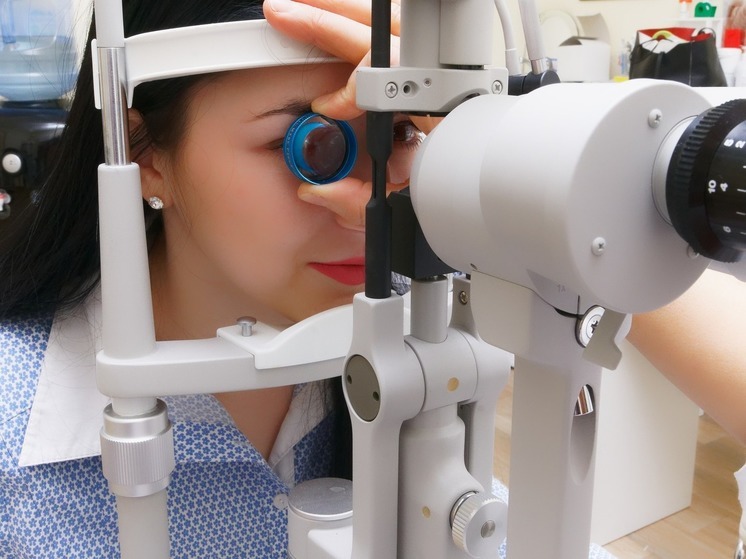Alzheimer's disease can be tracked by eye movement speed
Eyes can tell a lot about brain health. Vision problems may be one of the earliest signs of cognitive decline. New research shows that loss of visual sensitivity may indicate dementia up to 12 years before it is diagnosed.

The new findings are based on following 8,623 healthy people in England over many years. By the end of the study, 537 participants had developed dementia, so the researchers could understand what factors might have preceded the diagnosis.
At the beginning of the study, researchers asked participants to take a visual sensitivity test. To conduct the test, they had to press a button as soon as they saw a triangle forming in a field of moving dots. People who would develop dementia would be much slower to see this triangle on the screen than people who would not be diagnosed with dementia later.
Vision problems may be an early sign of cognitive decline because toxic amyloid plaques associated with Alzheimer's disease may first affect areas of the brain associated with vision, and as the disease progresses, areas of the brain associated with memory are damaged. Thus, vision tests may detect impairments earlier than memory tests.
Alzheimer's disease affects several other aspects of visual processing, such as the ability to see the shape of objects and distinguish certain colors. Another early sign of Alzheimer's disease is impaired «inhibitory control» of eye movements, which makes it easier to maintain attention from distracting stimuli. People with Alzheimer's disease have trouble ignoring distracting stimuli, which can manifest as problems with eye movement control.
If dementia makes it more difficult to avoid distractions, these problems may increase the risk of motor vehicle accidents. which is currently being researched at Loughborough University.
Scientists have some evidence to suggest that people with dementia tend to be ineffective at processing faces of new people. In other words, they don't follow the usual pattern of scanning the other person's face. In healthy people, this occurs from the eyes to the nose and mouth.
“We do this to capture the face and remember it for the future. Sometimes people can feel when the other person is not doing this,” says study author and professor of biological psychology If Hogervorst. He added that in fact, some doctors who work with people with dementia recognize that someone has dementia the first time they meet them. People with dementia can sometimes appear lost because they don't move their eyes purposefully to take in their surroundings, including the faces of people they just met.
Visual sensitivity linked to memory efficiency, experts also tested, helps Does increasing the number of eye movements improve memory. Previous research on this issue has been mixed, but some studies have shown that eye movements can improve memory.
«This may explain why we found that people who watch more TV and read have better memory and a lower risk of developing dementia than those who don't,» explains neurorehabilitation scientist Ahmet Hegde. — When we watch TV or read, our eyes run back and forth across the page of text and the TV screen. However, people who read frequently also tend to study longer. A good education provides reserve capacity for the brain, so that if the connections in the brain are damaged, the negative outcome will be less.”
Other studies have found that rapid left-to-right and right-to-left eye movements improve autobiographical memory. However, some data analyzes suggest that this beneficial effect of eye movement is only beneficial for right-handed people.
Despite these results, the use of eye movement disorders as a diagnostic method is not common. One barrier may be access to eye tracking technologies, which are expensive and require training to use and analyze.























































Свежие комментарии